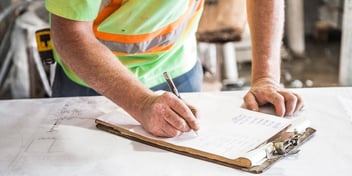It’s quite common today that companies hire outside talent for specific jobs to be completed through independent contractors, especially smaller companies with limited resources. This is a really great way to expand your company’s capabilities even before you have the means to build and grow.
But you’ve worked hard to create a maintain a positive safety culture in your workplace, so do you really want to risk bringing in outside workers who aren’t accustomed to the safety attitudes that you promote? Take a look at the importance of creating a safety culture with contractors so you can maintain your culture with all kinds of different workers.
Develop a culture-contractor conversation strategy.
You need to decide how you want to ensure safety with your contractors, both short- and long-term. When you’re searching for the right contractor for the job, are you looking at their safety records and examining their safety programs that are already in place? Maybe you’re planning on integrating them into your company’s own safety culture. Whichever you choose, you need to develop a strategy for this culture-contractor conversation. Contractors need to understand what you expect of them, and you need to make sure you’re communicating that effectively.
Require or provide safety training.
You can come up with some standards for hiring new contractors so that they will have met your safety criteria before ever setting foot inside your workplace. For example, you can require that specific training topics be completed by contracted workers before entering your work site. Or you can provide standard training for all workers who are new to your company.
Even if safety training records aren’t a part of your process, you can arrange for regular safety inspections of contractors’ areas to ensure that the standards of your company’s safety culture are being met.
Shift from compliance rituals to safety attitudes.
Whether you’ve hired a few contractors to supplement your workforce or you work with teams of contractors for short-term projects, one of the most important things to remember is that your focus should remain on your culture, not just compliance. It’s awesome if your contractors can boast low incident rates and pass inspections, but it’s infinitely better if they can prove that safety is part of their regular mindset as well. Passing an audit isn’t necessarily a sign of a workplace dedicated to safety, and neither is a low incident rate. A truly positive safety culture is based on commitment to safety as a priority and proactive decisions.
“Safety culture is about measuring the presence of safety, not the absence of accidents” (source).






Leave a Comment